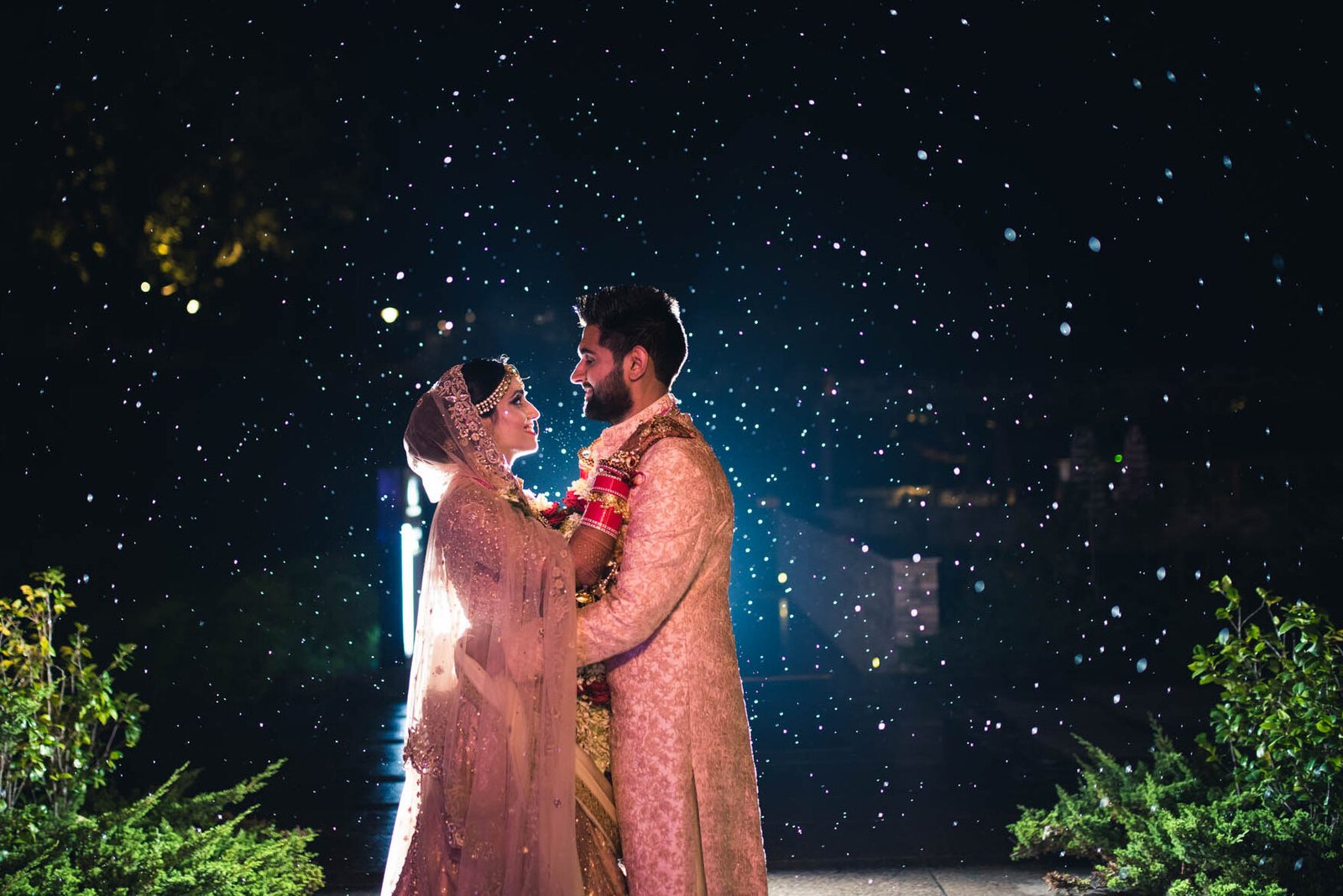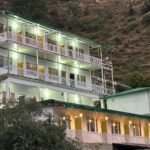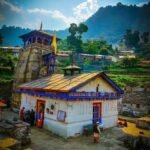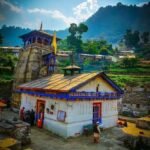
How to Get Married at Triyuginarayan Temple – Complete Wedding Procedure
Triyuginarayan Temple, located in Uttarakhand’s Rudraprayag district, is one of the most divine and unique wedding destinations in India. Couples from across the country and even abroad come here to bless their marriage in front of the holy fire that has been burning since the time of the gods.
If you’ve ever dreamed of a Triyuginarayan Mandir wedding but don’t know how to actually get married there? Don’t worry, we’ve got you covered.
This guide covers everything- the temple’s significance, step-by-step marriage procedure, required permissions, estimated costs, rituals performed, best season, accommodation options, and even tips for making your wedding smooth and memorable. If you don’t want the hassle of planning everything yourself, Way to Kedar offers packages for Triyuginarayan Temple destination wedding , making it easier for you to focus on the rituals while they take care of the arrangements.
Triyuginarayan Temple Wedding Significance

Triyuginarayan Temple holds immense spiritual and cultural importance in Hindu mythology. It is believed to be the sacred site where Lord Shiva married Goddess Parvati, with Lord Vishnu himself acting as the divine witness to their union. The temple is also home to the eternal flame (Akhand Dhuni), which has been burning continuously since that divine wedding. Couples who marry here are said to receive the blessings of eternal love and togetherness.
The temple is famous for its four Triyuginarayan holy kunds (water tanks) which are Rudra Kund, Vishnu Kund, Brahma Kund, and Saraswati Kund. Devotees believe that a holy bath in these kunds before the wedding cleanses the soul and prepares the couple for a sacred bond.
For this reason, Triyuginarayan is often referred to as the “marriage capital of Uttarakhand”, drawing couples from across India and even abroad to solemnize their vows.
Documents & Registration Procedure for Triyuginarayan Temple Marriage
To get married at Triyuginarayan Temple, couples must fulfill both legal and traditional requirements. According to Indian marriage law, the minimum age is 21 years for the groom and 18 years for the bride. Valid documents are essential not only for temple permission but also for the official registration, which gives the marriage legal recognition.
Step 1: Required Documents
- ID proof of bride and groom (Aadhar card, Passport, Voter ID)
- Age proof (Birth certificate, School certificate, or PAN card)
- Passport-size photographs of both
- Two witnesses with valid ID proofs
- For foreigners: Valid visa and No Objection Certificate (NOC) from the embassy
Step 2: Application at Local Registrar Office
The couple must submit the marriage application form along with required documents at the Rudraprayag registrar office. A wedding date should be booked in advance in coordination with both the registrar and temple authorities.
Step 3: Obtaining Temple Permission
Approval must be taken from the temple committee and the priest. After paying the temple donation or ritual fees, the wedding slot is confirmed. It is advisable to make this booking at least 1–2 months in advance.
Step 4: Performing Temple Rituals
- Taking a holy bath in the sacred kunds (Rudra, Vishnu, Brahma, Saraswati)
- Performing puja and offerings at the Akhand Dhuni
- Completing the seven sacred rounds (saptapadi) around the eternal flame
- Exchanging garlands and receiving blessings from the priest and family
Step 5: Legal Registration After Rituals
Once the temple rituals are completed, the couple must visit the registrar office along with their witnesses and priest. The registration is finalized, and the couple receives the official marriage certificate, which is valid across India and abroad.
Triyuginarayan Temple Wedding Procedure (Step by Step with Time & Cost)
Weddings at Triyuginarayan Temple combine ancient traditions with spiritual rituals, creating a truly divine experience. Below is a complete breakdown from the first prayer to the final registration:
Step 1: Ganesh Poojan – Auspicious Beginning
- What happens: The priest performs Ganesh Poojan to remove obstacles.
- Duration: 20–30 minutes
- Cost: ₹1,500 – ₹2,500 (dakshina + samagri)
Step 2: Sankalp (Sacred Vows)
- What happens: The couple makes a Sankalp (sacred vow) before the holy fire, marking the formal start of rituals.
- Duration: 15–20 minutes
- Cost: Included in priest dakshina
Step 3: Holy Bath at Triyuginarayan holy kunds
- What happens: The couple bathes in Rudra Kund, Vishnu Kund, Brahma Kund, and Saraswati Kund for purification.
- Duration: 30–40 minutes
- Cost: Free (may require ₹200–₹500 for offerings like flowers & milk)
Step 4: Lighting a Lamp at Akhand Dhuni
- What happens: The couple lights a diya from the eternal flame and places it in the sanctum.
- Duration: 10–15 minutes
- Cost: ₹200–₹500 (oil, diya, flowers)
Step 5: Pooja & Offerings
- What happens: Prayers and offerings are made to Lord Shiva and Vishnu, along with rituals at Akhand Dhuni.
- Duration: 30–40 minutes
- Cost: ₹2,000 – ₹4,000 (puja samagri + dakshina)
Step 6: Seven Sacred Rounds (Saptapadi)
- What happens: The couple takes seven vows around the eternal fire.
- Duration: 30 minutes
- Cost: Included in overall priest fees
Step 7: Exchange of Garlands & Vedic Mantras
- What happens: Priest chants mantras, and the couple exchanges garlands.
- Duration: 20 minutes
- Cost: ₹500–₹1,000 (garlands & flowers)
Step 8: Blessings from Elders & Priest
- What happens: The priest and elders bless the newlyweds.
- Duration: 10–15 minutes
- Cost: ₹1,000 – ₹2,000 (priest dakshina)
Step 9: Legal Registration (Optional but Recommended)
- What happens: After rituals, the couple visits the Rudraprayag registrar office with witnesses for legal registration.
- Duration: 1–2 hours (depending on office schedule)
- Cost: ₹1,500 – ₹3,000 (govt. fee + affidavit charges)
Total Time for Wedding: Around 3–5 hours including all rituals
Estimated cost of Getting Married at Triyuginarayan Temple
The Triyuginarayan marriage cost depends on whether you prefer a simple ceremony or a full destination wedding setup.
- Temple Donation & Priest Dakshina: ₹5,000 – ₹15,000 (for basic rituals).
- Simple Temple Marriage: ₹20,000 – ₹50,000 (includes rituals, basic arrangements, and documentation).
- Destination Wedding Packages: ₹1.5 lakh – ₹10 lakh+ (includes decoration, catering, photography, accommodation, event management).
- Extra Costs: Guest stay, travel, flowers, music, and professional photography.
Famous Weddings at Triyuginarayan Temple

The temple has gained media attention for hosting several celebrity and high-profile weddings.
- Actress Kavita Kaushik (famous TV star) and her husband Ronnit Biswas performed their marriage rituals here.
- Several celebrity couples from Delhi NCR and Uttarakhand have chosen this sacred venue for their big day.
- The temple is also popular among foreign couples, who wish to experience a divine Hindu wedding in the Himalayas.
Best Time to Get Married at Triyuginarayan Temple
- Ideal Seasons: April–June (spring/summer) and September–November (autumn). The weather is pleasant, and travel routes remain open. Many couples combine their Triyuginarayan Temple wedding with a Do Dham Yatra to make the celebration even more memorable.
- Avoid: July–August (heavy monsoon) and December–February (extreme cold & snowfall, road closures).
- Tip: October is especially popular as it combines clear skies with festive vibes.
How to Reach Triyuginarayan Temple
- By Air: The nearest airport is Jolly Grant Airport, Dehradun (approx. 230 km).
- By Train: The closest railway stations are Rishikesh (210 km) and Haridwar (230 km).
- By Road: The temple is well connected by road — Delhi → Rishikesh → Rudraprayag → Sonprayag → Triyuginarayan.
If you’re planning to start your journey from Delhi, check out our detailed guide on Delhi to Triyuginarayan mandir.
- Last Mile: From Sonprayag, it’s around 12 km drive/trek to reach Triyuginarayan.
Accommodation Options for Couples & Guests
- Dharamshalas & Guest Houses: Affordable stay options near the temple for small groups.
- Hotels & Resorts: Available in Sonprayag, Guptkashi, and Rudraprayag for larger wedding parties.
- Homestays: Great for couples wanting a cozy, cultural experience.
- Tip: Book early during wedding/festival season to avoid last-minute issues.
Things to Remember Before Getting Married at Triyuginarayan Temple
- Book in Advance: Reserve your wedding date at least 1–2 months ahead with the temple authorities and priest.
- Age Requirement: Minimum 21 years for groom and 18 years for bride.
- Documents: Carry all ID proofs, age proofs, photos, and witness documents. Foreign couples need NOC and visa.
- Weather Considerations: Avoid monsoon (July–August) and peak winter (Dec–Feb). Best months are April–June & Sept–Nov.
- Dress & Tradition: Wear traditional attire; modest clothing is recommended inside the temple.
- Ritual Essentials: Carry pooja items if not arranged by wedding planner.
- Travel & Accommodation: Plan transport & stay in advance, especially for large groups.
- Local Customs: Follow priest instructions and temple rules during rituals.
Final Checklist for Triyuginarayan Temple Wedding
- Confirm wedding date & temple slot with authorities
- Submit all documents to registrar & temple
- Arrange for priest and wedding planner (if needed)
- Prepare traditional wedding attire & pooja items
- Book accommodation for couple & guests
- Arrange transport to temple & local logistics
- Hire photographer/videographer
- Confirm holy bath and saptapadi rituals
- Keep donation/fees ready for temple
- Complete legal marriage registration post-ceremony
Tips for a Smooth Wedding at Triyuginarayan Temple
- Hire a Local Wedding Planner: They can handle temple permissions, rituals, decoration, and guest logistics.
- Confirm Priests & Rituals in Advance: Ensure the priest is available and briefed about your wedding type (simple or full destination wedding).
- Carry Essentials: Traditional attire, pooja items, warm clothes, and comfortable footwear for trekking/temple visit.
- Photography & Videography: Hire professionals familiar with hill weddings and temple rules.
- Travel Planning: Consider road conditions, especially if traveling from Delhi or nearby states. Allow buffer time for last-mile travel.
- Respect Temple Protocols: Follow the dress code, avoid loud music near the sacred area, and maintain decorum during rituals.
- Guest Coordination: Share travel, stay, and ritual schedule with your guests well in advance.
- Budget Planning: Allocate funds for temple donation, priest, accommodation, transport, catering, and photography.
- Backup Plan: Monsoon and winter seasons can affect road access; have contingency dates or plans ready.
Getting married at Triyuginarayan Temple is more than just a wedding—it’s a spiritual journey filled with divine blessings, ancient rituals, and memories that last a lifetime. From taking sacred vows around the eternal flame to bathing in the holy kunds, every moment at this temple connects couples to centuries-old traditions and the sacred Himalayan energy.
Triyuginarayan Temple offers a perfect blend of spirituality, beauty, and tradition, making it one of India’s most sought-after wedding destinations. Start planning today, gather your loved ones, and make your sacred union in the heart of the Himalayas an unforgettable experience.
Frequently Asked Questions
- Can we book the temple exclusively for our wedding?
Many couples ask if the temple can be reserved fully for private ceremonies. The answer: exclusive booking is usually not possible, but slots can be booked in advance for your group. - Is photography and videography allowed inside the temple?
Most areas permit photography, but priests may restrict cameras near sacred rituals. Hiring professionals familiar with temple rules is recommended. - How many guests can be accommodated during the wedding?
The temple itself has limited space, so small gatherings are ideal. Large groups can be accommodated nearby in Sonprayag or Guptkashi. - Do we need special attire for the rituals?
Traditional Indian wedding clothes are preferred. Modesty is important: sarees, lehengas, or sherwanis, avoiding shorts or revealing outfits. - Are vegetarian meals mandatory for wedding ceremonies?
Yes, the temple and rituals generally require vegetarian offerings. Non-vegetarian items are not allowed in the sanctum. - How far in advance should we book priests and arrangements?
At least 1–2 months in advance is recommended, especially during peak season (April–June & September–November). - Are there any specific rituals for foreigners or non-Hindus?
Foreign couples can participate in Vedic rituals, but priests may simplify some mantras. Legal marriage registration is mandatory for recognition abroad. - Can we perform a symbolic wedding if we don’t want legal registration?
Yes, couples can perform all temple rituals as a spiritual ceremony only, but the marriage won’t be legally recognized without registrar registration. - What are the nearby attractions for guests?
Guests can explore Rudraprayag, Guptkashi, Kedarnath base, and Sonprayag, making it a mini-Himalayan tour along with the wedding. - Is insurance or safety advice needed for hill weddings?
For trekking or long-distance travel, consider travel insurance and proper medical kits. Hill roads can be tricky during monsoon or winter.
- Are live streaming services allowed for weddings?
Some couples want to live stream the ceremony for remote guests. Permission from the priest is needed; technical setup must be discreet.
- Can we combine pre-wedding shoots at Triyuginarayan Temple?
Yes! The scenic backdrop is perfect for pre-wedding photography, but permissions and timing must be coordinated with temple authorities.
- Are there options for wedding decorations at the temple?
Minimalistic decorations are allowed; elaborate setups need prior approval. Many couples use Way to Kedar packages for managing decor and logistics.
- How to handle extreme weather on wedding day?
Keep backup tents or indoor arrangements in case of rain or snowfall. Check weather forecasts before finalizing dates.



